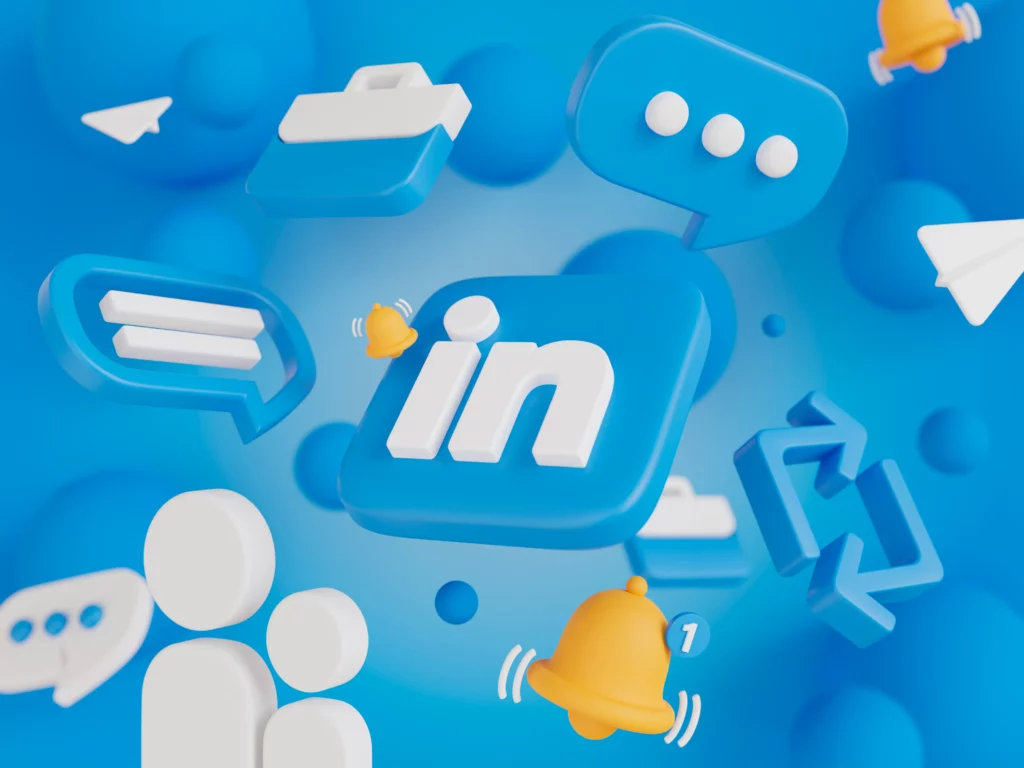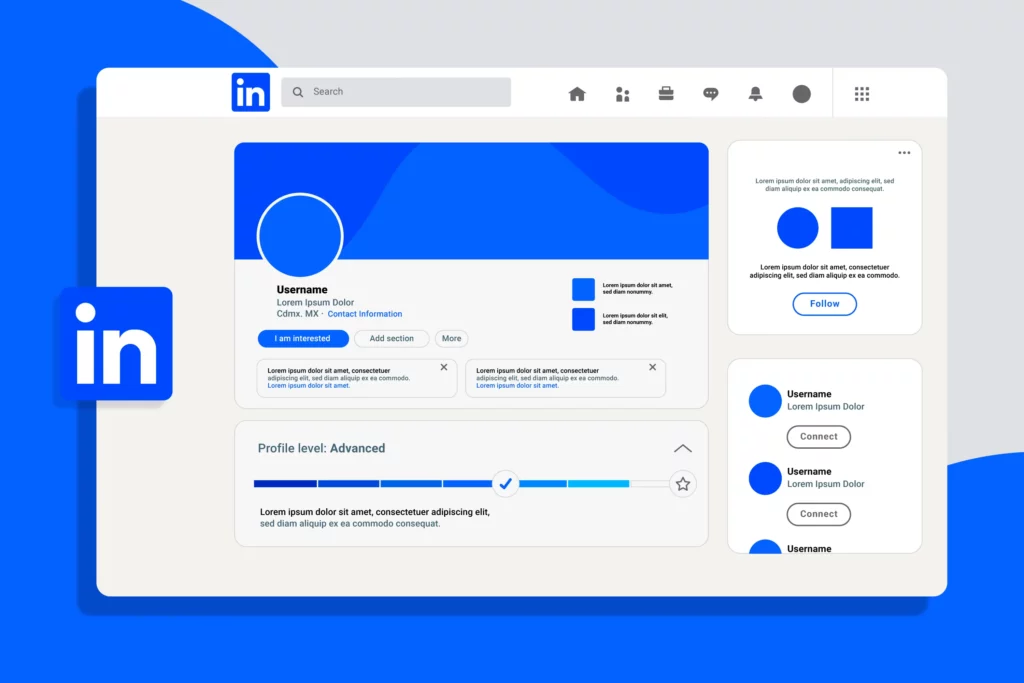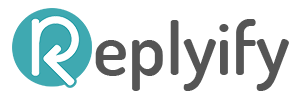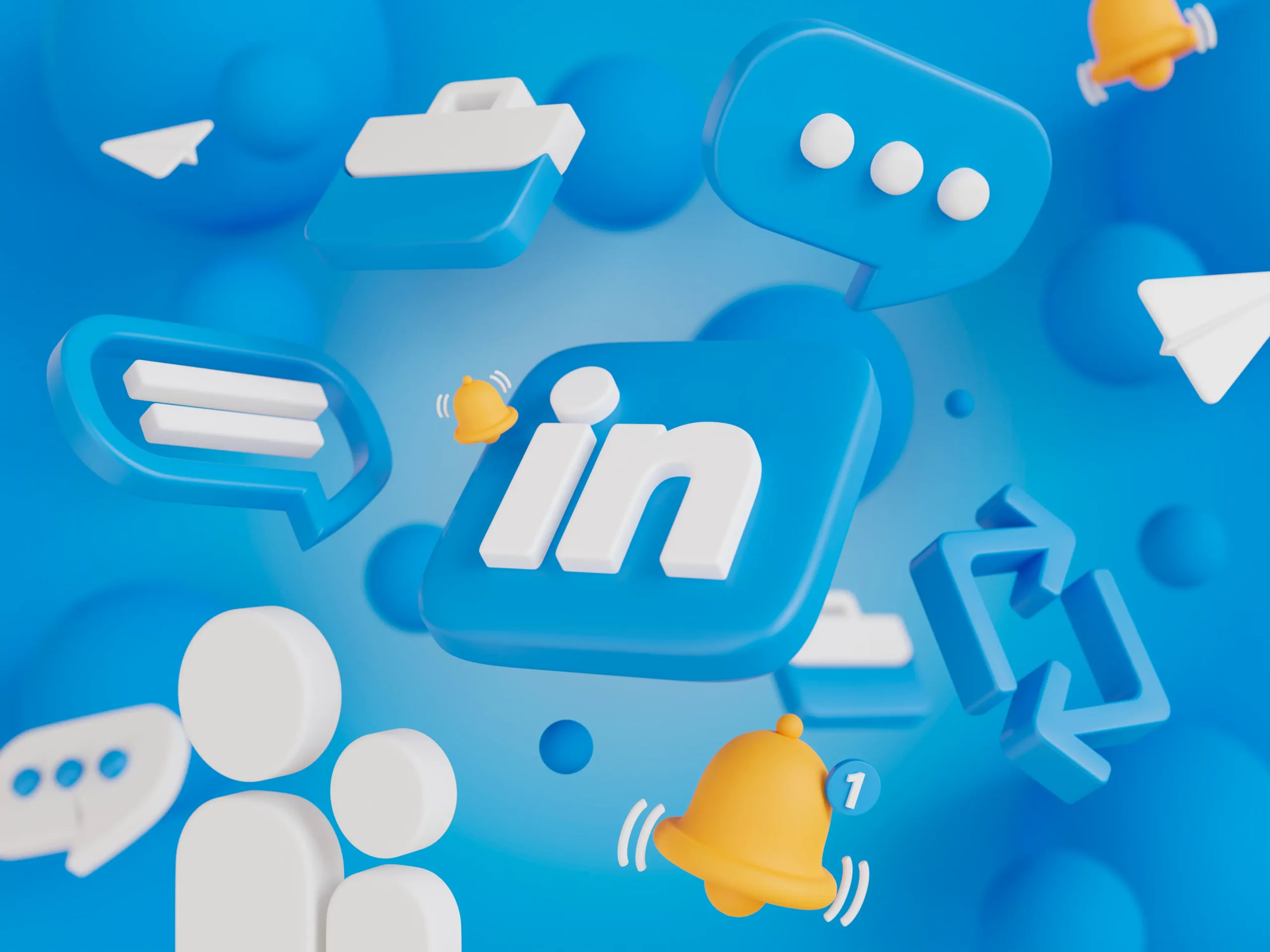LinkedIn Lead Generation for B2B Sales
If your B2B company needs qualified leads, LinkedIn offers one of the best platforms for generating leads. LinkedIn has been the number one site for B2B marketing for several years, and there’s no sign of that ever-changing.

LinkedIn features hundreds of millions of users in decision-making positions at their companies, countless tools to help you navigate leads with ease, and an advanced marketing system that’s sure to get you noticed. The limits of LinkedIn B2B lead generation are practically endless.
Despite so many tools and opportunities at your disposal, mastering lead generation on LinkedIn is a process that takes time, practice, and an understanding of the website. By the end of this article, you should be able to maximize your LinkedIn performance to stand out and generate as many new leads as you possibly can.
Why SHOULD YOU USE LinkedIn FOR LEAD GENERATION?
Founded in 2002, LinkedIn is the social media platform for businesses big and small. Social media platforms like Facebook and Instagram are ideal for catching someone in their leisure time, but LinkedIn is where you want to be for actual business.
LinkedIn reports that 80% of B2B marketing leads from social media and 46% of social media traffic to company websites come from their platform. LinkedIn is undeniably the ideal platform for B2B lead generation. After examining their user statistics, it makes sense why.
User Activity in linkedin

The platform currently has over 810 million members, 675 million of which are monthly users and over 300 million of which are daily users. The mobile app also receives roughly 400 million users each month, making LinkedIn lead generation more convenient on both ends.
In 2014, former LinkedIn CEO Jeff Weiner expressed the company’s insatiable interest in increasing its number of users. He said, “We are in the process of asking ourselves what it would take… to create economic opportunity for the three billion people in the global workforce.”
THE Power OF Linkedin
Of their 500 million users in 2016, LinkedIn reported roughly 40 million users could make decisions on behalf of their businesses, and 61 million users were Senior-level influencers. With this in mind, one in every five people you will meet on LinkedIn theoretically has buying power.
LinkedIn is also the most used online platform for Fortune 500 companies. In 2016, Microsoft spent $26.2 billion to acquire the company. Needless to say, LinkedIn is where businesses big and small go to spend money.
Millennial Growth ON the LinkedIn platform
As the younger generations are taking more prominent positions in businesses, it’s critical to connect with them on the platforms they’re using.
According to 2016 statistics, millennials took up 87 million of LinkedIn’s 500 million users. Plus, 11 million of those millennials were in decision-making positions at their companies.
Over the past six years, those numbers have likely increased, making LinkedIn an ideal place to connect with potential leads.
Millennials are also creating start-ups and fresh businesses, which could be the perfect leads for your company. Since so many millennials form a significant portion of LinkedIn users, it’s the perfect place to start new B2B ventures with new companies.
Step 1: Start With the Basics
Before diving into paid advertising and targeted messages, start with the core tools available to you on LinkedIn. These will help you navigate the over 800 million users and find those that might become quality leads.
With tools like the Sales Navigator, your business should have no trouble generating leads on LinkedIn.
LinkedIn Sales Navigator
The Sales Navigator can be a lifesaver, allowing you to easily find great matches for your company. It helps you strategize the best ways to target and introduce yourself to new leads.
Below, we’ll explore a few ways to use the navigator to find potential leads among millions of users.
Advanced Lead Search in linkedin
The LinkedIn Sales Navigator’s most helpful feature is its Advanced Lead Search. This convenient function allows you to search by:
- Name
- Geography
- Sector
- Company Size
- Company Revenue
- Industry
- Experience
- Education
- Languages
- And so much more
Boolean Search in linkedin
LinkedIn also uses the Boolean search function. By using particular keywords and symbols, you can narrow or expand your search for the best results.
Here are a few tips on how to use the Boolean function to your advantage:
- Use OR (in all capital letters) between multiple search terms. This technique will give you extended search results, but not all the terms will appear together in each result.
- Example: finance OR accounting OR treasurer
- Use AND (in all capital letters) between words that you want to search together. This way, you can narrow down your results.
- Example: accounting AND manager
- Use NOT (in all capital letters) before a word you want to exclude from your search.
- Example: sales NOT executive
- Use parentheses to combine phrases and other Boolean keywords.
- Example: chief officer NOT (financial OR marketing)
Unlike other websites, LinkedIn’s Boolean search does not utilize the +, – or * symbols. Regardless, memorizing and utilizing LinkedIn’s available Boolean search functions will help you maximize lead generation.
linkedin Lead Recommendations
If you’re not sure what to search, the LinkedIn Sales Navigator also recommends leads based on the following things:
- Your sales preferences
- Your profile views
- Your search history
- Your save history
- Your engagements
To view your lead recommendations, simply visit another lead’s profile. LinkedIn will generate potential leads from that same company and similar businesses.
Look on the right side of the screen to see leads from the same company, and scroll down to the bottom of the profile to explore similar businesses.
You may receive a message that says, “Hmm. Looks like we’re fresh out of leads.” This usually means LinkedIn does not have enough data to recommend you any leads. You can fix this problem by updating your sales preferences.
LinkedIn Targeting Strategies

Another basic part of generating leads on LinkedIn is understanding who to target to maximize your efforts. You don’t need to target the entire LinkedIn community, so consider who to contact.
As a general rule, do not include friends, family, and colleagues in your saved leads. You also do not want to send messages to businesses randomly.
There are two ways to find potential leads and narrow down your search on LinkedIn.
1. 2nd Degree Networking
Second-degree networking, or targeting people just outside your LinkedIn circle, is one of the most strategic and efficient methods of generating new leads.
You will almost always be sending targeted messages to strangers when generating leads. However, a stranger on the Internet with a mutual connection is hardly a stranger at all.
Your chances of generating a lead are greatly increased when you target businesses and clients connected to businesses and clients you’ve already made great impressions with. If anyone on LinkedIn has written you a recommendation, it’s especially worth reaching out to and introducing yourself to some of their connections as well.
2. Who Viewed Your Profile
“Who Viewed Your Profile” is an accessible, self-explanatory tool that can help you generate leads. As the name says, this feature allows you to see everyone who has viewed your LinkedIn profile. The “Who Viewed Your Profile” tool is great for initiating conversation with a business that has already stumbled upon your profile.
It’s also an effective tool for tracking what messages or strategies are and are not working.
For example, let’s say you send 20 copies of one message the first week, then 20 of another message two weeks later. You can check who viewed your profile after the first message and after the second one. If three new people viewed your profile because of the second message, you can easily pinpoint which message was strongest and improve your process.
Step 2: Develop Targeted Messages
Now that we’ve covered the basics, it’s time to dive into the core tasks.
The most crucial step of LinkedIn lead generation is sending messages. Though much of the process is directly comparable to sending a cold email, there’s a bit more involved on LinkedIn.
Once you have established your target audience, it’s time to contact them using the “Outreach Sequence.” This efficient method of sending messages on LinkedIn usually follows a sequence of four types of messages, which we’ll explore below.
Keep in mind, though, that this is just a guide. You do not need to follow this sequence for every lead you talk to, but the Outreach Sequence is still an incredibly useful guideline to passively adopt.
Message #1: Connection Request
The first message you send to any new lead will always be a connection request. LinkedIn uses connection requests for the sake of privacy. To start a B2B relationship on LinkedIn, you must find a way to introduce yourself to the contact while still respecting their privacy.
From many new prospects, the conversation ends with this message. There’s no obligation for the person or business you’re messaging to respond to or even read what you’ve sent. It’s up to you and your own wordplay to make them want to talk to you.
The connection request message should be short. Say hello, introduce yourself, then introduce why you’re messaging and why you’d be worth starting a B2B venture with. Some people even phrase this as a question. LinkedIn recommends bringing up how you found them.
The message should be about two sentences long, aside from the greeting and closing. Keep it short, direct, and professional.
Message #2: Thank You
Assuming they accepted your connection request, you can now move on to the second message. Send this message roughly an hour after they’ve accepted your request, depending on the time of day.
The thank you message can be a little longer than the connection request. Still keep it to a minimum so as not to intimidate your new connection.
This message typically consists of two parts: a thank you and a direct question. Thanking your new prospect for connecting with you shows them you’re respectful.
The question you ask should be a reiteration of what you were asking in your first message, but it does not necessarily have to be. Your intend to lead this conversation into a mutually beneficial relationship, so choose your question wisely.
Asking a direct or probing question with a clear answer will make them more likely to respond. While you need not ask a yes-or-no question, don’t ask something vague such as, “what is your business looking for?”
Like with the first message, keep it short and direct, constantly moving the conversation forward.
Message #3: Content
Next, you will want to send your new connection proof that you’re valuable enough to start a B2B relationship with. The third message is about providing them with content. “Content” can be anything from an article with information on your respective industry to an online tool they might find helpful.
When you do this, don’t outright send your prospective lead a link. Instead, ask them if they would like to receive this information. Asking rather than assuming they want to receive your content shows that you respect their privacy. It also gives them yet another opportunity to respond.
If your new connection did not respond to the thank you message, aim to send the content message roughly five days after. Otherwise, the correct timing to send this message is up to you.
Question #4: Request a Meeting
The meeting request message is ultimately the message that matters most. Directly ask your new connection if you can discuss things further in a meeting or phone call, where your B2B relationship can truly begin.
If your new connection still hasn’t responded to your previous messages, wait to send this message until 2 weeks after you’ve sent the content message. This time gap gives them plenty of opportunities to review and respond to your previous messages.
For the sake of simplicity, keep this message short. Include how you can assist them or solve their problem, then politely and directly ask to schedule a meeting or phone call.
This message should not include a yes-or-no question. Keep the conversation active and don’t give them an easy opportunity to say no.
Limitations on LinkedIn connections
To prevent bots and other scams, LinkedIn has a daily maximum for connection requests. The current daily maximum is between 80 and 100, but it can be different for each user.
Exceeding these limits may result in restrictions on your LinkedIn account, and possibly even deactivation. LinkedIn’s connection request limit reinforces the importance of targeting the right leads. Every message matters.
LinkedIn invitations work a bit differently. Technically, you may send 3,000 invitations on LinkedIn every day, but the site will ask you to enter a Captcha after you exceed 100. Being aware of these limitations will help you utilize LinkedIn’s features to their greatest potential.
Step 3: Consider Paid Advertising
While searching for leads and messaging them is a cost-effective way to generate leads, it may not be enough.
Using LinkedIn’s variety of ads and sponsored content is an efficient – yet pricey – method for B2B lead generation. LinkedIn offers numerous options for your marketing strategy that are sure to grab the attention of potential leads.
There is no singular ad that works best. LinkedIn reports that users are three times more likely to engage with content if they’re shown both Display Ads and sponsored updates.
linkedin Message Ads
Message Ads send personalized messages and invitations to LinkedIn users when they log in or during their most active hours. Formerly known as Sponsored InMail, Message Ads also allow you to track the engagement of your messages, making the process of lead generation a whole lot easier.
linkedin Dynamic Ads
Shown in the sidebar of the LinkedIn homepage, Dynamic Ads are an incredibly customizable way to stand out to potential leads.
Dynamic Ads come in three different options:
- Follower Ads
- Spotlight Ads
- Content Ads
Follower and Spotlight ads encourage users to follow you, visit your profile, and fulfill other call-to-action prompts. Content ads invite other users to download the content you’re advertising.
Display Ads on linkedin
Shown under the right column, Display Ads are large banners or photos that stand out from the rest of the LinkedIn website. Display Ads are particularly effective for B2B companies and lead generation. Not only this, but Display Ads are also incredibly cost-efficient.
Sponsored Content on linkedin
For ads that play “the social media game,” there is LinkedIn’s Sponsored Content. Sponsored Content will appear on a users’ News Feeds. The posts you sponsor can include single images, carousel images, and videos.
There’s almost no limit to the customizable options with sponsored content. LinkedIn even helps you target which types of users you want to see your posts. Additionally, LinkedIn provides options if the content you want to sponsor is something you don’t want showing up on your standard LinkedIn or Showcase pages.
Lead Gen Forms
To make things even easier, LinkedIn also provides Lead Gen Forms. This feature provides easy-to-fill-out forms that anyone who sees your Message Ads or Sponsored Content can use.
These forms are already pre-filled by LinkedIn. All someone needs to do is double-check their professional information and send it over to you. Lead Gen Forms make the entire process of LinkedIn lead generation so much faster for all parties involved.
Step 4: Staying Ahead of the Game
Even with messaging and ads, you still need to stay ahead of the game and include additional strategies like daily posts and consistent engagement.
Staying ahead in the online business world is no easy task. Not only do you have to prove yourself and stand out among competitors, but you also have to stand out on the website’s algorithm.
As any social media influencer or SEO writer will tell you, there is no single solution to “the algorithm.” But, you can take specific steps and create useful content to make you stand out from the competition and secure new leads.
Daily Posts on linkedin
Regular posts on your LinkedIn page or Showcase are a vital step in helping you stand out. Whether it’s an update on your business or reblog of industry news, regular posts remind your current connections that you exist. Your activity and engagement with your posts also keep you at the top of other users’ News Feeds.
Constructing articles with research and other information from your field is a fantastic way to make your profile stand out. Sharing your knowledge in your respective industry proves to others that you are the best on this platform among hundreds of millions of users.
linkedin Profile
Impressing a new lead with your profile is an essential step in lead generation. Your LinkedIn profile must make it clear what your business is, include an enticing tagline, and overall feel inviting. Include as much contact information in your profile as you feel comfortable putting out there.
Engage with Others
Posting about your own business is one thing; engaging with a business you’ve previously worked with is another. Even on LinkedIn, some of the purest ways to generate leads are by word-of-mouth and recommendations.
Disregarding how it helps the algorithm, engaging with previous contacts on LinkedIn keeps your business at the forefront of their minds. It’s free advertising at its finest.
Keep Your Friends Distant
As essential as engaging with others on LinkedIn is, watch who is in your circle if you plan on taking B2B lead generation seriously. You want your LinkedIn News Feed to open up to potential and current business clients, and you want your content at the top of those clients’ feeds.
Carefully monitoring your connections is more than keeping your friends and family off of your LinkedIn. It’s also about making sure your LinkedIn connections relate to your business’s industry and can produce quality leads.
For example, if you are a power washer, it will do you no good if the majority of your LinkedIn network is other power washers. Unless you can generate leads from them, keep your colleagues and your competitors off your feed.
Conclusion
LinkedIn is a busy website with hundreds of millions of users. B2B relationships are a social ordeal, so it makes perfect sense that the best possible place for lead generation is on a social media platform.
If it isn’t clear by now, there is no one trick to successfully generating leads on LinkedIn. Some people will find success by using all of the strategies above. Other LinkedIn users have found success by sticking to just one strategy.
By learning who to target, understanding how to utilize all of LinkedIn’s many functions, and perfecting the wording and the timing of your messages, you can become a LinkedIn Lead Generation Guru like no other.

